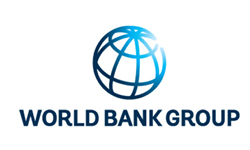1740 results found
Featured results



More results

The Intercity Express Programme project was initiated in 2005, with the Procuring Authority’s business case showing that, at that point in time, trains were only just providing sufficient capacity to meet demand, and that existing trains were approaching the end of their expected service life.


This resource consists of a variety of options available to address the principle as applicable to the particular circumstances of a project.

The goal of this paper is to describe the common features of small scale providers, propose common typology for describing and classifying different types of SPSPs, assess the scale and knowledge of SPSPs and compare patterns and trends in small scale water supply and electricity services.

This document carries out analysis in several countries to identify the role of small-scale providers (SSP) of water and sanitation services, as well as why these small scale providers exist and their experiences in Peru.


Overall, the study has taken a broad approach to defining OA - going well beyond the minimalist notion of simply guaranteeing legal access to the grid for generators and wholesale buyers.


Overall, the study has taken a broad approach to defining Open Access to Transmission and Distribution grids - going well beyond the minimalist notion of simply guaranteeing legal access to the grid for generators and wholesale buyers.

This paper presents a case study of the Brazilian Power Sector
On 27 January 2016, the Global Infrastructure Hub was represented by Senior Director, Richard Timbs, at the global launch of the International Infrastructure Support System (IISS) at the Inter-American Development Bank in Washington.
The iRAP case studies showcase activities that are saving lives and preventing serious injuries on roads.
This paper is intended to capture the main lessons learned from conducting Open Data Readiness Assessments and assisting countries with their implementation.

We asked innovators from all over the world, how can digital ideas be applied to solve economic or social infrastructure issues? Today we’re announcing our Top 10 finalists for InfraChallenge!
This policy brief outlines promising ideas to attract instiutional investors to pay for infrastructure they have not convinced pension funds or affluent individuals to invest, especially in emerging economies with untested issuers, The “tax-kicker” bond being proposed here could solve this issue.

Today the GI Hub has released Transition Pathways to Sustainable Infrastructure, a new resource to help governments shape future infrastructure to meet global climate targets and the UN Sustainable Development Goals with practical, accessible research and open consultations.
Today we released two new supplements to our Infrastructure Monitor report, focusing on the role of blended finance and environmental, social, and governance (ESG) factors in infrastructure investment. These latest updates, developed in partnership with Convergence and GRESB, offer a comprehensive examination of both areas, providing valuable insights for infrastructure professionals.

The Investing in Canada Infrastructure Program is one way the Government of Canada is delivering funding to communities through the Investing in Canada Plan.


This publication outlines the current efforts of the Asian Development Bank to promote sustainable infrastructure in Asia and the Pacific, looking at how lives can be improved with regards to infrastructure in the energy, transport, water & waste, communcations technology areas.


Infrastructure project preparation capacity is weak across most regions of the world. It is critical to strengthen these capabilities to address one of the major bottlenecks in attracting private capital to infrastructure, which is the lack of a bankable, investment-ready pipeline of infrastructure projects


This OECD paper provides a stocktake of investor practices and adoption of Environmental, Social, and Governance (ESG) in their investment processes.

The investment life cycle and High Value High Risk (HVHR) Framework (life cycle guidelines) apply to all government departments in the state of Victoria and support the development of business cases for capital investments.

The Investment Management Standard (IMS) Guide provides good practice to support the government to identify and select the investments that provide the most benefit to society.





 InfraChallenge
InfraChallenge



